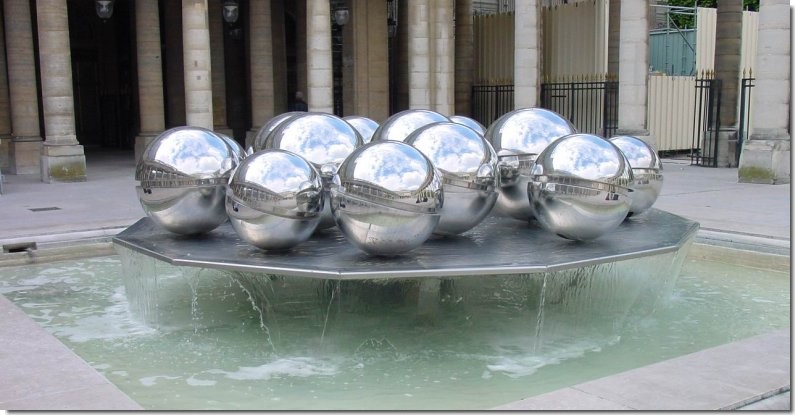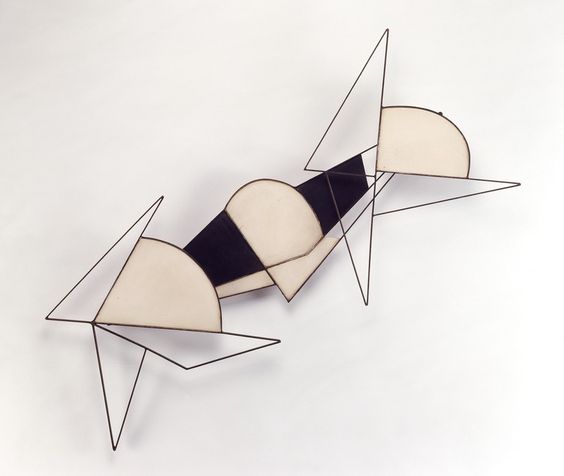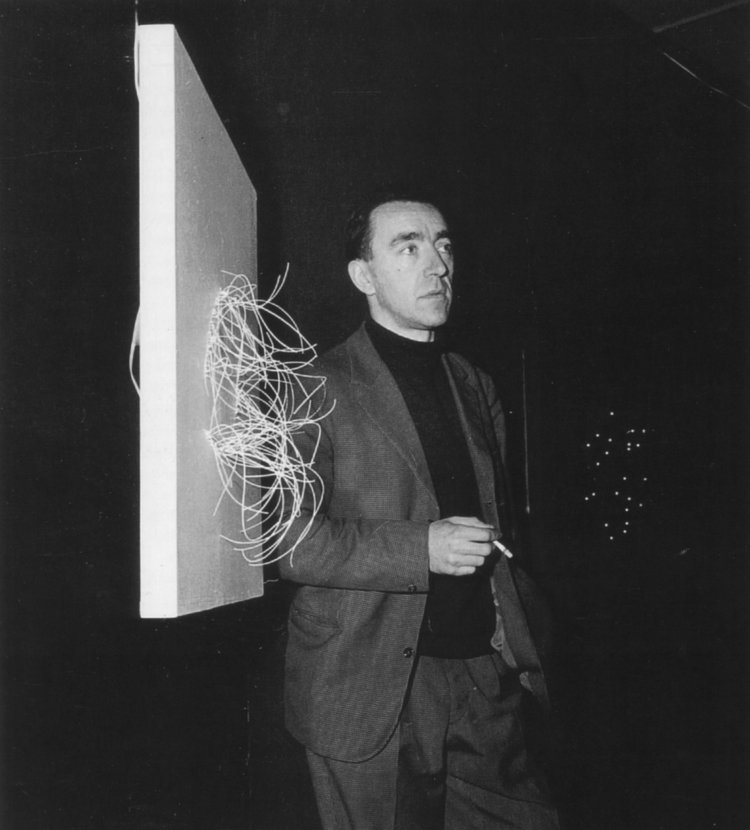
Pol Bury n’est jamais resté en place

We love the title of the article in this month's L'Oeil magazine devoted to the Belgian artist Pol Bury: "La Louvière brings Bury out of his "bûl"". No less than 250 works created by Pol Bury (1922-2005) throughout his career, prints, sculptures and animated reliefs, can currently be seen at La Louvière. But the painter, sculptor, engraver, draughtsman and writer is also one of the joyful companions of contemporary art who developed the "Bûl thought" in the 1950s with the poet and writer André Balthazar (1934-2014). Which mixes derision and self-mockery in a spirit inherited from Dada, so as to completely blur any attempt at ideological recovery. In the wake of surrealism, the two artists had founded the Belgian magazine Daily-Bûl, the "most casual magazine in the world", before setting up a completely eccentric institution called the Academy of Montbliard, where this famous "Bûl thought" was gradually developed.
So why take Pol Bury out of it? Because the artist cannot be summed up in this thought, which is only one of the many episodes in his career, and because the centenary of his birth was celebrated with sufficient dignity in Belgium to allow us to broaden the picture. After the splendid period of the 1970s and 1980s, Pol Bury (1922-2005) seems to have fallen into relative obscurity. Of course, we know his famous hydraulic fountains animating the urban space, his iconic metallic spheres notably installed in the heart of Palais Royal in Paris thanks to a public commission from Jack Lang, which "are placed on trays and propose a game of reflection and mirror with the architecture, the gardens and the sky", as Anne-Charlotte Michaut writes in L'Oeil. But on the occasion of the centenary of the artist's birth, the Centre de la gravure et de l'image imprimée in La Louvière, his native town in Belgium, had the excellent idea of devoting an important exhibition to him entitled "Va-et-vient". This will allow you to come and go a little more calmly on the life and work of this great poet of slow movement.

Hydraulic fountains, Pol Bury
Looking back, we can see how much the evolution of Pol Bury's work was made through decisive encounters. He was only 16 years old when he met Achille Chavée (1906-1969) in a café in 1938, during his studies at the Mons School of Fine Arts. The Belgian poet of whom he became a friend, a great figure of Walloon surrealism in Hainaut, had founded the Rupture group in La Louvière four years earlier. This association with the surrealist group, whose political commitment was the main motivation, opened up new horizons for Pol Bury, and in particular enabled him to work with René Magritte (1898-1967) in Brussels. A painter who will at that time greatly influence the painting of Pol Bury, as will also the paintings of Yves Tanguy (1900-1955).
Denounced for acts of resistance in Belgium during the Second World War, the young artist took refuge in France and returned to his native country through the front door in 1945, as he participated in the International Exhibition of Surrealism in Brussels. But very quickly Pol Bury will turn away from surrealism to choose abstraction. He wanted to renew himself and devote himself more to color and form. In 1947, he joined the group of the Young Belgian Painting, "before launching a few years later in the CoBrA adventure, following his meeting with Christian Dotremont and Pierre Alechinsky," says the journalist of L'Oeil. Once again, founding encounters. Christian Dotremont (1922-1979) was one of the first to raise writing to the level of plastic art. As for Pierre Alechinsky (born in 1927), he did not hesitate to mix expressionism with surrealism in his artworks.
The great shock will occur in front of the mobiles of Alexander Calder (1898-1976), that Pol Bury discovers in 1950 at the art gallery Maeght. Three years later, he gave up painting. The painting is no longer enough for him. He wants space. He wants to combine forms detached from the wall. He wants to integrate movement and randomness in his works of art for sale. His first Mobile Plans were exhibited at the Apollo Art Gallery in December 1953. With their metal and wood elements on pivots, they can be manipulated at will by visitors... and noticed by the Parisian gallery owner Denise René. She invited Pol Bury to participate in the exhibition "The Movement" that she organized in 1955 in her art gallery. Thus, he found himself exhibiting his works of art in relief alongside artists of international renown, such as Calder, Soto, Duchamp, Tinguely or Vasarely. And to become through the game of encounters and friendships, one of the major representatives of kinetic art, this artistic movement proposing works of which all or part are in motion.

Moving planes, Pol Bury (1953)
So that his works of art for sale, in the form of moving geometric compositions, are no longer manipulated in any way by anyone, Pol Bury very quickly uses electric motors. And by dint of contemplation, finally abandons geometry and abstraction in favor of a poetization of movement and slowness. He created his Ponctuations in 1959. The 1960s were the years of his international consecration. His works of art for sale gradually invaded the art galleries, and in 1964 Pol Bury was one of the representatives of Belgium at the Venice Biennale. He has been living in France for three years, and regularly exhibits at the Iris Clert art gallery. The American gallery owner John Lefebre spots him and invites him to exhibit in his art gallery in New York. Enormous success. Works by Pol Bury are even acquired by the MoMA.

Pol Bury during the exhibition "Ponctuations érectiles et molles" at the Smith Gallery (1961)
It will take all the persuasion of the gallery owner and patron Aimé Maeght to bring Pol Bury back from the United States to France in 1968. It must be said that the offer is attractive: the artist will be able to embark on all the graphic experiments he wants alongside the printer André Maeght, now having the presses of the ARTE-Maeght printing house at his disposal. His famous Ramollissements, which will become virtual in the 2000s, in which he distorts the faces of internationally known personalities to question their sacredness, were born at the turn of the 1970s. Traveling exhibitions in the United States and Europe completed the consecration of his work and public commissions poured in as soon as he began monumental installations and created his first hydraulic sculpture in 1976.
Until his death, Pol Bury devoted himself to experimentation, always fascinated by the latest technological advances and unable to do without the written word to give substance to his ideas. In short, his "bûl" did not risk locking him up!





































































